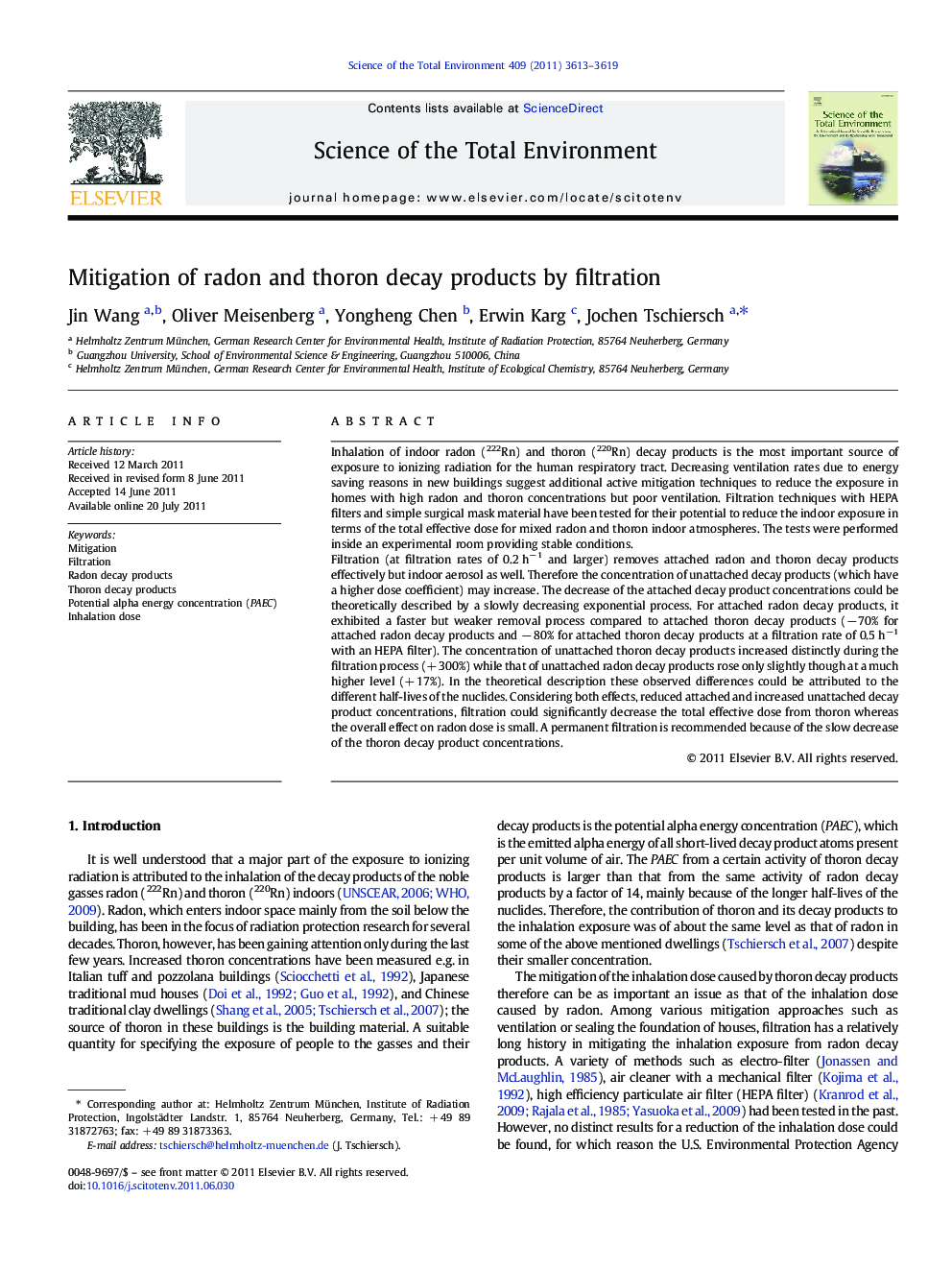| کد مقاله | کد نشریه | سال انتشار | مقاله انگلیسی | نسخه تمام متن |
|---|---|---|---|---|
| 4430016 | 1619843 | 2011 | 7 صفحه PDF | دانلود رایگان |

Inhalation of indoor radon (222Rn) and thoron (220Rn) decay products is the most important source of exposure to ionizing radiation for the human respiratory tract. Decreasing ventilation rates due to energy saving reasons in new buildings suggest additional active mitigation techniques to reduce the exposure in homes with high radon and thoron concentrations but poor ventilation. Filtration techniques with HEPA filters and simple surgical mask material have been tested for their potential to reduce the indoor exposure in terms of the total effective dose for mixed radon and thoron indoor atmospheres. The tests were performed inside an experimental room providing stable conditions.Filtration (at filtration rates of 0.2 h−1 and larger) removes attached radon and thoron decay products effectively but indoor aerosol as well. Therefore the concentration of unattached decay products (which have a higher dose coefficient) may increase. The decrease of the attached decay product concentrations could be theoretically described by a slowly decreasing exponential process. For attached radon decay products, it exhibited a faster but weaker removal process compared to attached thoron decay products (− 70% for attached radon decay products and − 80% for attached thoron decay products at a filtration rate of 0.5 h−1 with an HEPA filter). The concentration of unattached thoron decay products increased distinctly during the filtration process (+ 300%) while that of unattached radon decay products rose only slightly though at a much higher level (+ 17%). In the theoretical description these observed differences could be attributed to the different half-lives of the nuclides. Considering both effects, reduced attached and increased unattached decay product concentrations, filtration could significantly decrease the total effective dose from thoron whereas the overall effect on radon dose is small. A permanent filtration is recommended because of the slow decrease of the thoron decay product concentrations.
► Indoor radon and thoron decay products are important sources of radiation exposure.
► Diminishing ventilation rates in new buildings suggest active mitigation techniques.
► Filtration decreases significantly the total effective thoron inhalation dose.
► However, the overall effect of filtration on radon dose is small.
► Permanent filtration is recommended because of the slow decrease of thoron progeny.
Journal: Science of The Total Environment - Volume 409, Issue 19, 1 September 2011, Pages 3613–3619